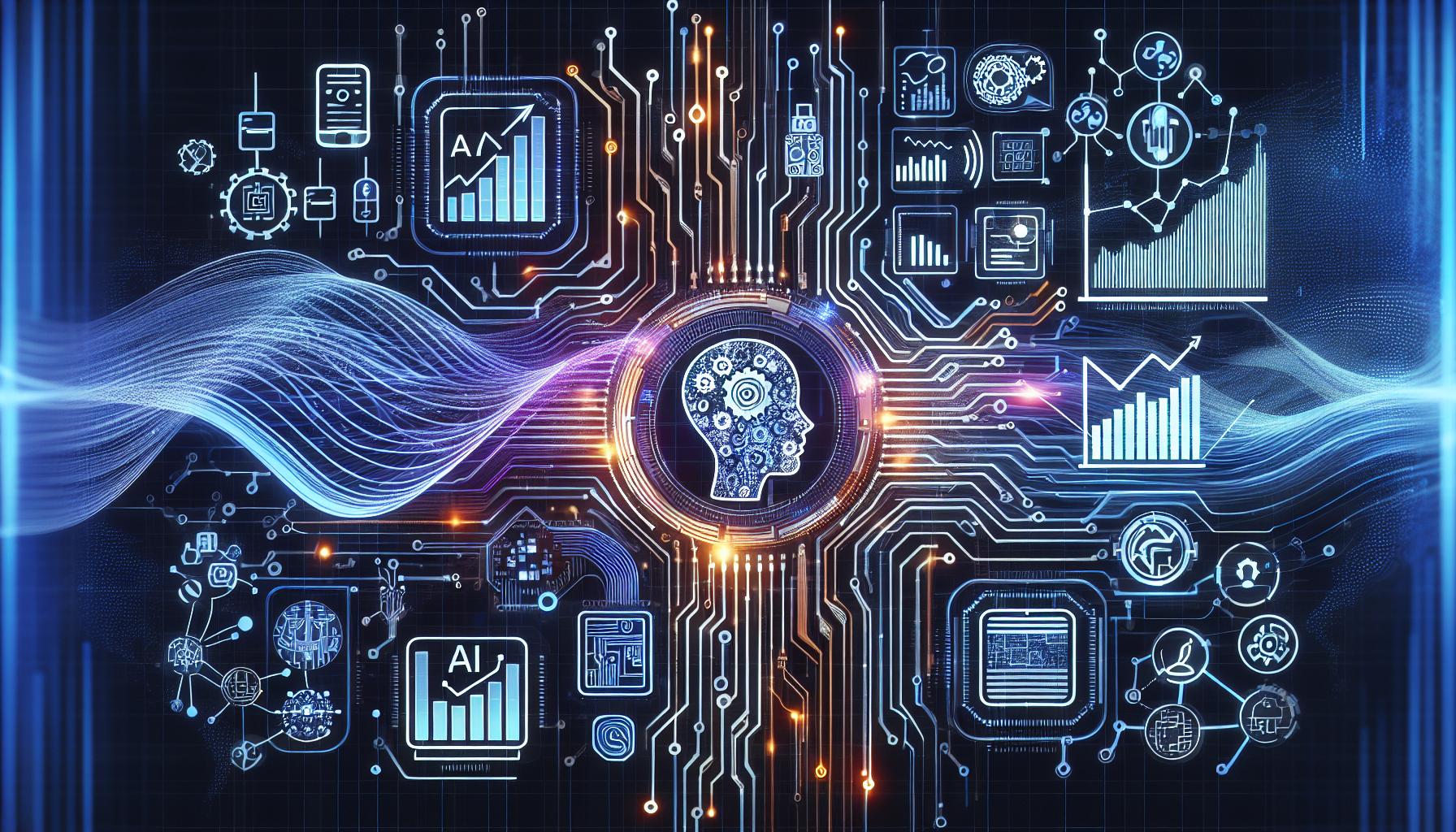Collecting Key Information for Training AI Across Various Business Roles: A Comprehensive Guide

Introduction
Artificial Intelligence (AI) has become a pivotal technology in revolutionizing how businesses operate. From streamlining operations to enhancing customer interactions, AI implementation across various business roles can lead to significant improvements. But, successful AI deployment hinges on collecting key information to train these systems effectively. In this guide, we will explore the practical steps and provide examples of how to collect this essential data for training AI in different business functionalities.
Understanding the Importance of Data in AI Training
AI systems learn from data. The more relevant and high-quality data they are trained with, the better they perform in their designated roles. Data acts as the fuel that drives machine learning algorithms, enabling AI to identify patterns, make decisions, and predict future outcomes. Therefore, gathering the right kind and amount of data is crucial to developing robust AI models.
Identifying Key Business Roles for AI Implementation
Before diving into data collection, it is essential to pinpoint which business roles will benefit most from AI integration. Common areas where AI can make a substantial impact include:
- Customer Service
- Marketing
- Sales
- Human Resources
- Operations Management
- Finance
Each of these areas requires a different set of data for AI training purposes. Let's explore the types of data needed for some of these roles and how to collect them effectively.
Customer Service
In customer service, AI technologies such as chatbots, virtual assistants, and sentiment analysis tools can greatly enhance customer experience. The key data sources include:
- Customer Interaction Logs: Collect chat logs, emails, and call transcripts to train AI on how to respond to customer queries.
- Support Tickets: Gather data from support tickets to help AI understand common issues and how to resolve them.
- Customer Feedback: Utilize reviews and feedback forms to train AI in sentiment analysis and improve customer interaction quality.
Marketing
Marketing teams can leverage AI for predictive analytics, customer segmentation, and personalized marketing. Essential data sources include:
- Customer Demographics: Collect demographic information such as age, gender, location, and income.
- Behavioral Data: Insights from website analytics, social media interactions, and purchase history.
- Engagement Metrics: Track metrics such as click-through rates, open rates, and conversion rates to train AI models.
Sales
AI in sales can optimize lead scoring, sales forecasting, and recommendation systems. Key data sources include:
- CRM Data: Collect customer relationship management (CRM) data to understand transactions and sales cycles.
- Sales Interaction Logs: Gather data from emails, call logs, meetings, and follow-up notes.
- Purchase History: Use transactional data to help AI recommend relevant products or services to customers.
Human Resources
AI can streamline recruiting, employee engagement, and performance management processes. Important data sources include:
- Applicant Data: Collect resumes, cover letters, and job application forms.
- Employee Records: Use HR records to understand employee performance, attendance, and engagement levels.
- Survey Data: Employee feedback and engagement surveys can provide valuable insights for AI models.
Effective Data Curation Steps
Curating data for AI training involves several key steps:
Step 1: Data Collection
Identify and gather relevant data from various sources. Ensure that the data collected is comprehensive and covers all necessary aspects of the business role in question.
Step 2: Data Cleaning
Clean the collected data by removing duplicates, correcting errors, and ensuring consistency. This step is crucial to prevent misleading results during AI training.
Step 3: Data Annotation
Annotate the data with the necessary labels or tags to help the AI understand the context. For instance, in customer support logs, label different types of queries and their resolutions.
Step 4: Data Segmentation
Divide the data into training, validation, and test sets. This will help in evaluating the AI model's performance and fine-tuning it as necessary.
Step 5: Data Augmentation
Increase the amount of training data by generating synthetic data or using data augmentation techniques. This step helps to improve the AI model's robustness and accuracy.
Step 6: Regular Updates
Continuously update the training data to reflect changes in business processes, market conditions, and customer behavior. This ensures that the AI remains effective over time.
Practical Examples of Data Collection for AI Training
Let's delve into practical examples to illustrate how businesses can collect key information for AI training across various roles:
Example 1: Enhancing Customer Support with Chatbots
A company wants to deploy a chatbot to handle basic customer inquiries. The steps involved include:
- Collecting Chat Logs: Gather historical chat logs from customer-agent interactions.
- Cleaning Data: Remove irrelevant information and ensure consistency in the language used.
- Annotating Data: Label the data with tags such as 'greeting', 'product inquiry', 'complaint', etc.
- Training the AI: Use the curated data to train the chatbot on handling various types of inquiries.
- Testing and Deployment: Evaluate the chatbot's performance and deploy it for customer use.
Example 2: Personalized Marketing Campaigns
A marketing team aims to create personalized email campaigns using AI. The steps include:
- Collecting Behavioral Data: Obtain data on customer behavior from website analytics and email interaction metrics.
- Cleaning Data: Ensure the data is free from errors and inconsistencies.
- Segmenting Data: Divide customers into different segments based on behavior, demographics, and purchase history.
- Training the AI: Train the AI model to predict the best time to send emails and the type of content that each segment prefers.
- Executing Campaigns: Use the AI model to create and send personalized emails, enhancing engagement and conversion rates.
Example 3: Optimizing Recruitment Processes
An HR team wants to streamline their recruitment process using AI. The steps are:
- Collecting Applicant Data: Gather resumes, cover letters, and application forms from job applicants.
- Cleaning Data: Standardize the data to ensure consistency in formatting and information structure.
- Annotating Data: Label the data with tags indicating qualifications, skills, and experience levels.
- Training the AI: Use the curated data to train the AI model to screen and shortlist candidates based on specified criteria.
- Implementing the AI: Integrate the AI model into the recruitment system to automate the initial screening process.
Conclusion
Collecting the right information for AI training across various business roles is a mix of art and science. By following the practical steps and examples provided in this guide, businesses can effectively harness the power of AI to transform their operations. Continuous data curation and updating are vital to maintaining the AI's relevance and effectiveness in a dynamic business environment.



